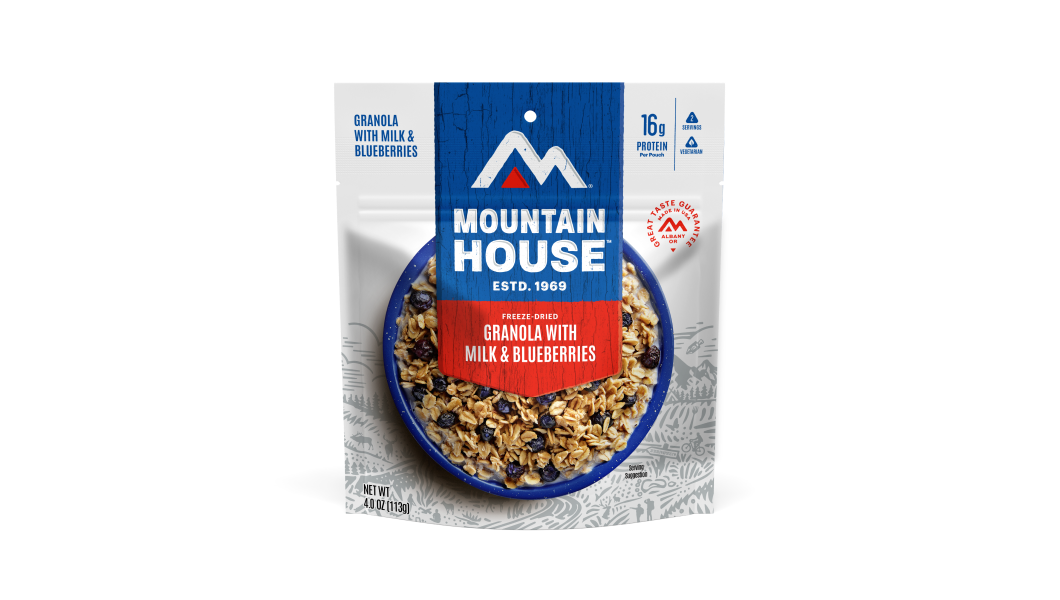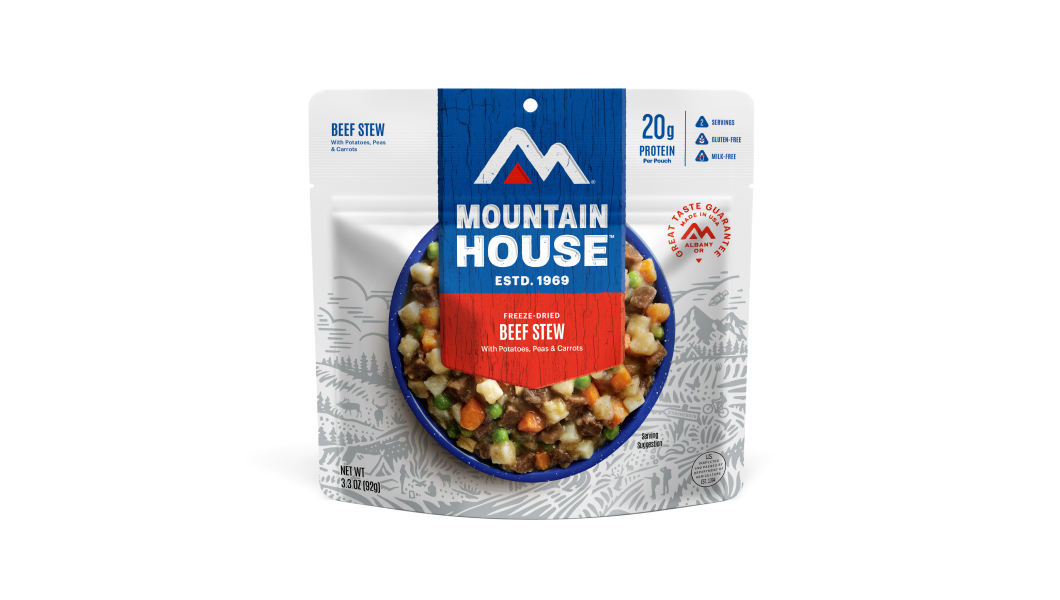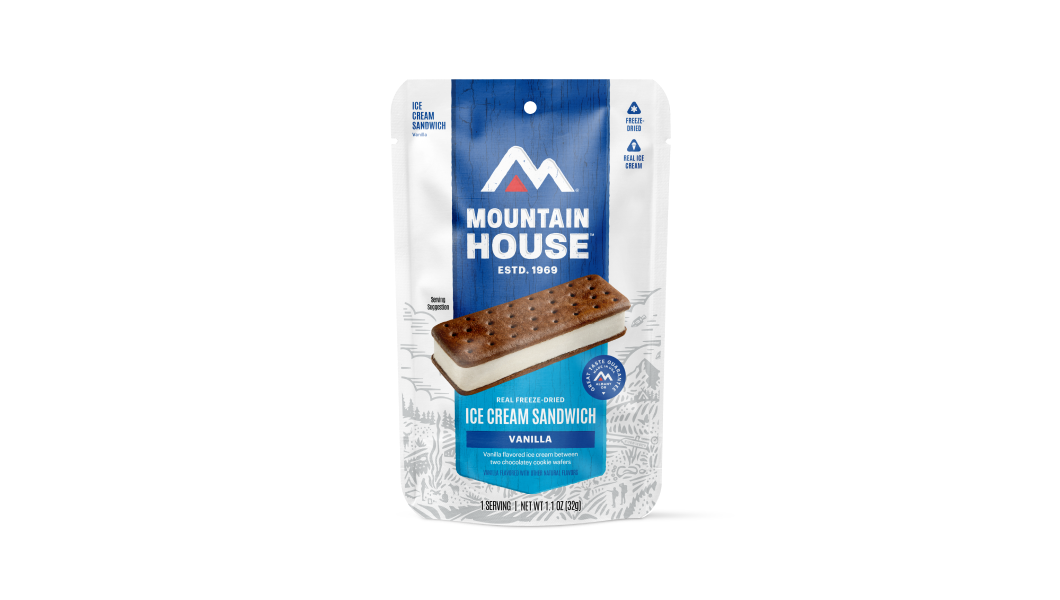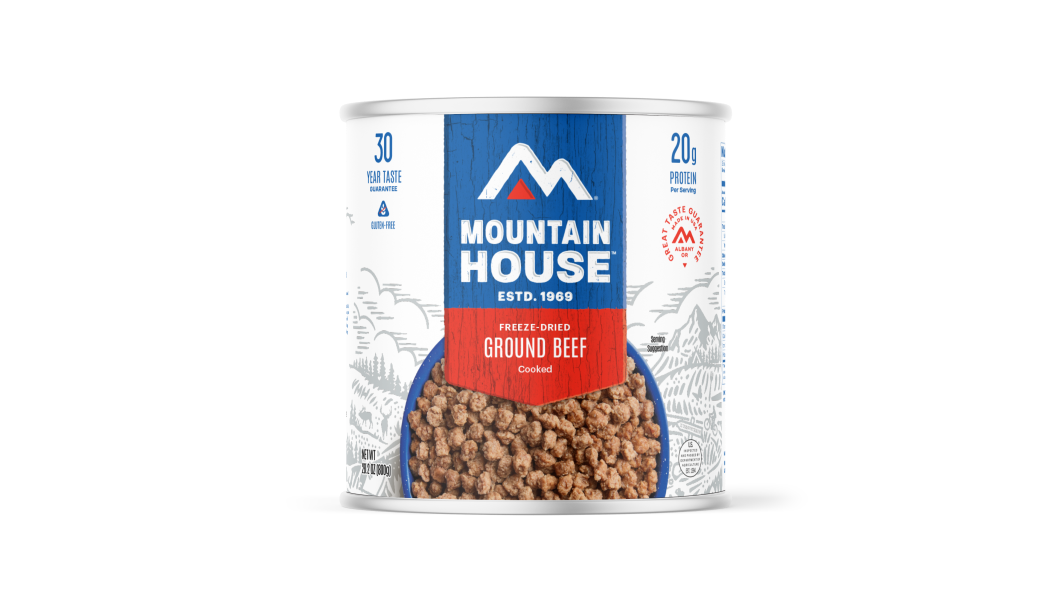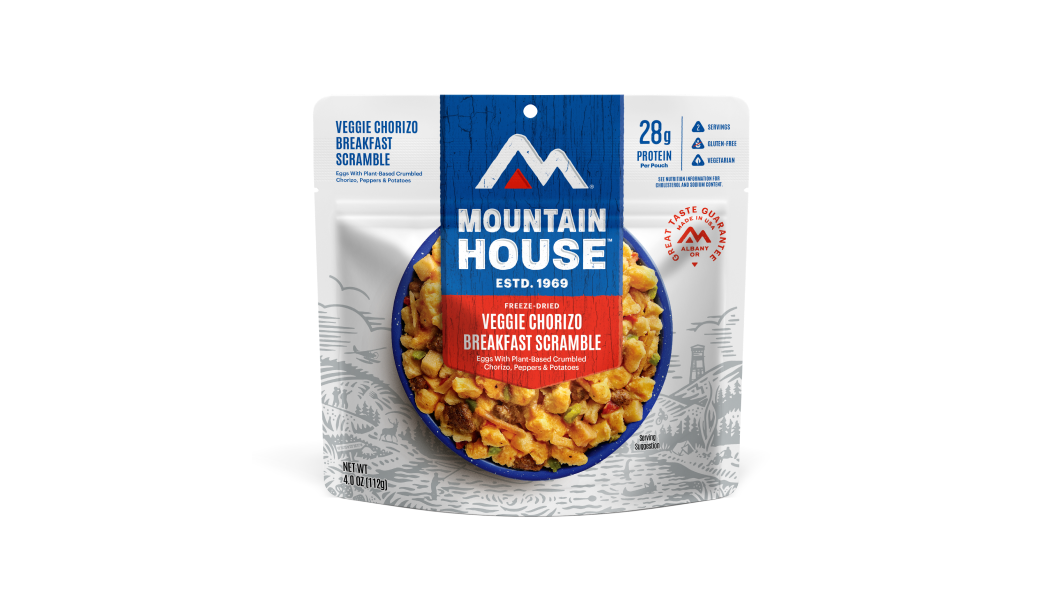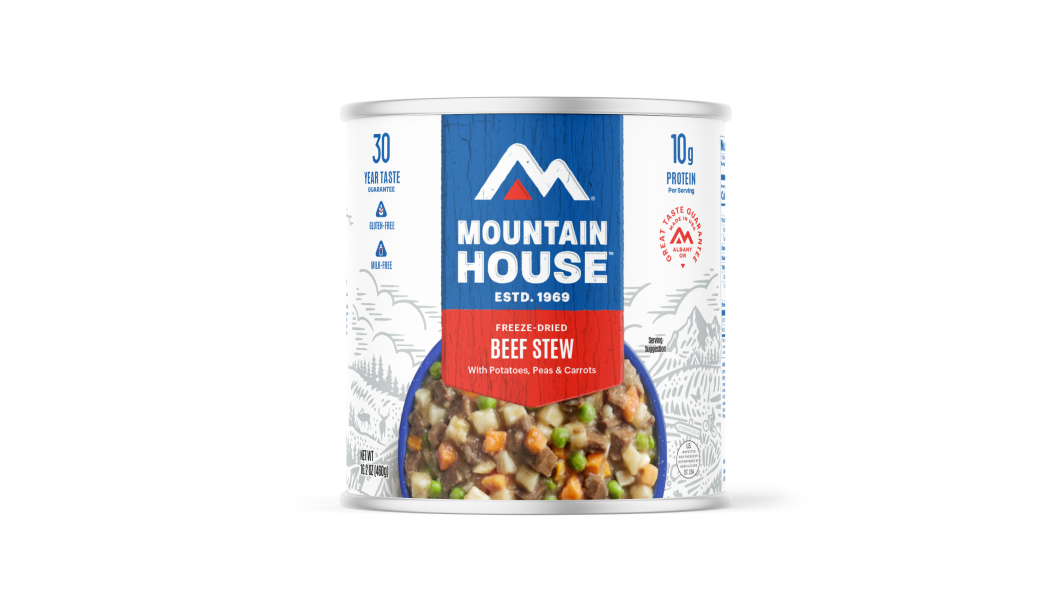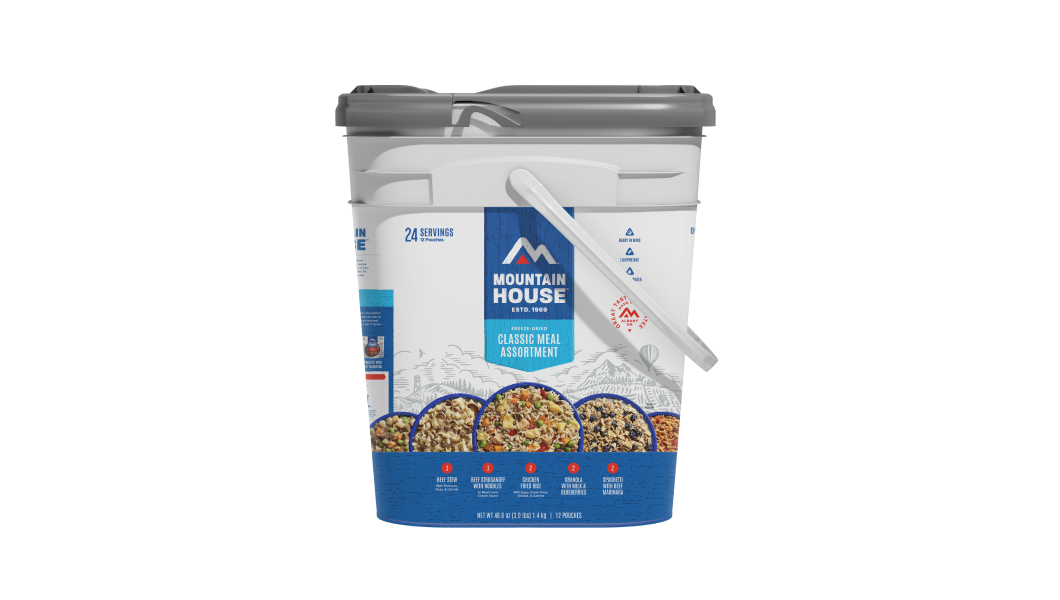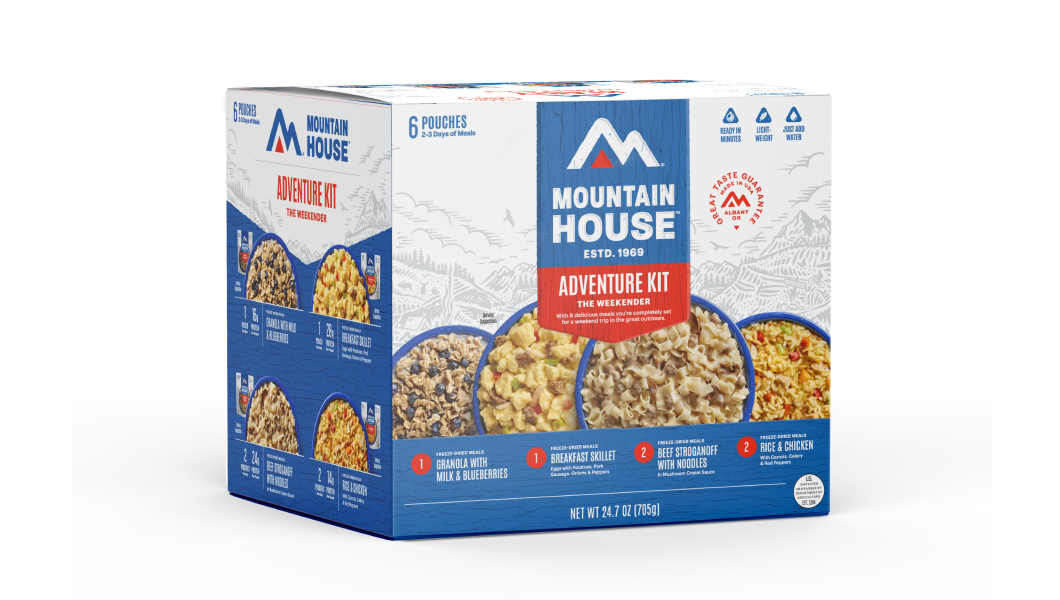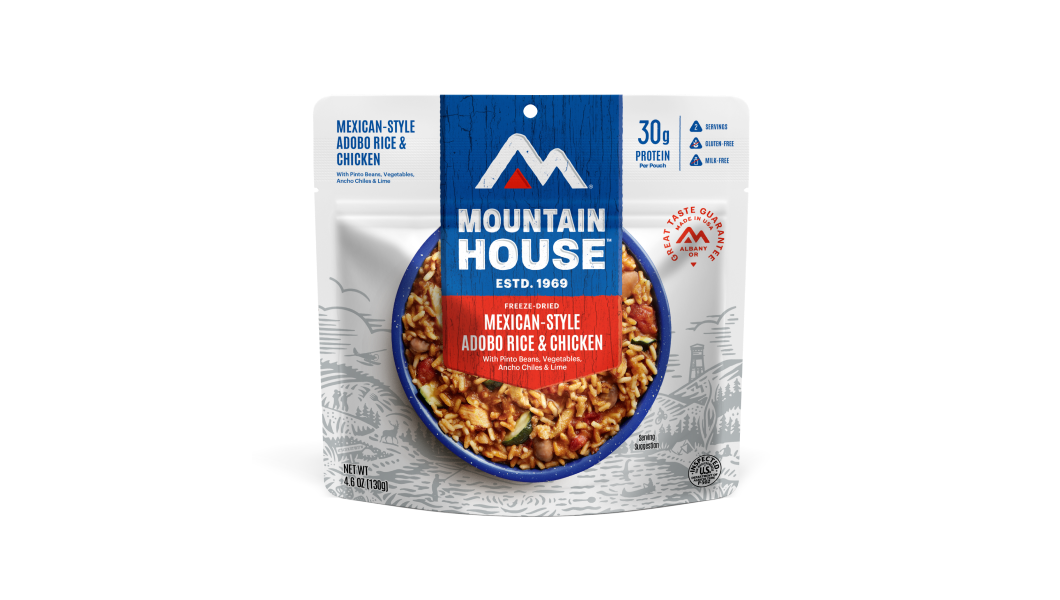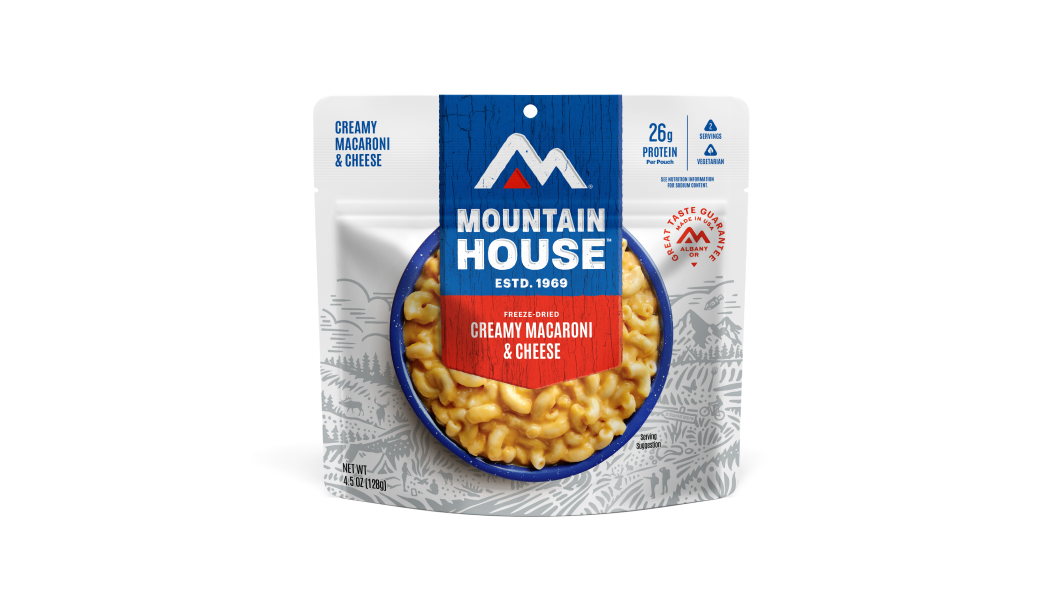Inspired for an Adventure? Check out Beef Stroganoff - Pouch and Beef Stew - Pouch
Free Ground Shipping On All Orders
Over 2,100 Reviews
Add description, images, menus and links to your mega menu
A column with no settings can be used as a spacer
Link to your collections, sales and even external links
Add up to five columns
Add description, images, menus and links to your mega menu
A column with no settings can be used as a spacer
Link to your collections, sales and even external links
Add up to five columns
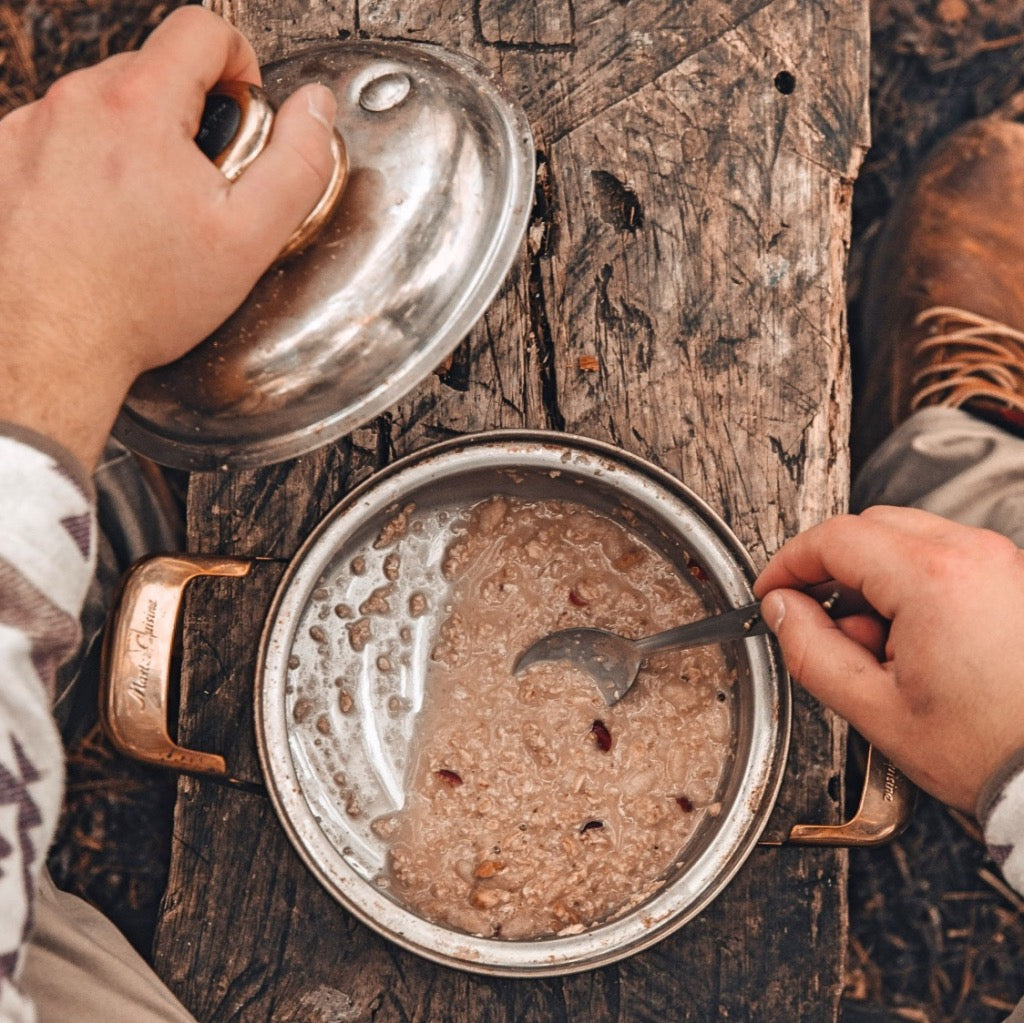

Many beginner backpackers find meal planning and backcountry cooking to be the most confusing and challenging part of backpacking in general. After all, food is the powerhouse fuel you need to keep churning out those miles and getting to those knockout views or back-of-beyond untrammeled spaces you’re after. Backpackers generally need to plan for 3,000–5,000 calories a day to meet their energy demands—equivalent to roughly 1.5–2 pounds of food per day, depending on factors like body size, exertion, and terrain.
Choosing the right trail-ready foods, packing the correct amounts, transporting and storing them in the wild, and calculating how much stove fuel and water you’ll need can overwhelm, even intimidate, newbies. In fact, plenty of seasoned backpackers still haven’t nailed down the most efficient way to keep themselves fed out in the wild.
We’ll share some great backpacking meals, recipes, and ingredients, plus a bunch of helpful tips for planning your wilderness diet and figuring out the best food options for your trip.
Breakfast Ideas for Backpackers

Breakfast is the most important meal of the day, so they say. Now, we’d argue that dinner is pretty darn crucial when it comes to backpacking meals, but there’s no question you need a solid jolt of energy in the morning to get those muscles moving. On long days when you’re breaking camp and covering some miles, a quick breakfast—quite possibly no-cook needed—is often the way to go; if you’re base-camping it for a rest day or two, you can afford to whip up a more complicated, gourmet-style feed if you so choose.
- Freeze-Dried Breakfast Skillet (includes 28g of protein!)
- Instant Oatmeal, Grits, or Hot Cereal
- Dried Milk & Granola
- Powdered Eggs
- Hard Boiled Eggs
- Powdered Meals
- Biscuits & Gravy (includes 22g of protein!)
- Pop-Tarts
- Cereal (the non-sugar-filled kind)
- Oatmeal with Nuts & Raisins
- Scrambled Eggs & Bacon
- Bagels with Salmon
- Nutella Wrap with Bananas
Freeze-dried breakfasts are perfect trail food because they’re incredibly lightweight and only require water (preferably hot) to become an energy-packed meal.

Lunches for Backpacking

Depending on your itinerary and personal preference, you may or may not be settling in for a sit-down, trailside lunch; sometimes it makes more sense to just snack it up (more on that later), particularly if you’ve got a lot of miles to cover or some tough terrain to tackle. In other situations, taking a nice midday break to enjoy some provisions may be just what the doctor ordered.
- Protein Bars
-
Bagels or Tortillas with Spreads:
- Almond Butter or Peanut Butter (packets take up little room)
- Jelly or Honey
-
Cheese & Crackers with Meats:
- Hard Meats (salami, summer sausage)
- Hard Cheeses (Parmesan, Romano)
- Tuna or Chicken (foil packets)
- Pita Wrap with Veggies & Hummus
-
Pizza Wrap or Pepperoni Pizza Bowl (includes 28g of protein!)
Backpacking Dinner Ideas

The prospect of dinner can be the only thing keeping you going those last tough foot-miles of the day. Some backpackers are more predisposed to gourmet dinners than others, but no matter what, the evening meal should be something to look forward to—tasty and nourishing, and low on hassle and fuss. Generally speaking, a mix of instant or quick backpacking meals for long, demanding days and more elaborate dinners for when you’ve got extra downtime at camp is ideal.
- Instant Soups
- Chicken and Dumplings (includes 36g of protein!)
- Jerky with Noodles
- Cheesy Beef Enchilada Bowl (if you’re looking for a little spice, and 32g of protein!)
- Mediterranean Couscous
- Chicken & Rice with Veggies
- Lentil Curry
- Chicken & Mashed Potatoes (includes 44g of protein!)
- Cashew Noodles
- Black Bean Burritos
Freeze-dried dinners are the ideal end-of-day meal, so effortless that you can skip the cooking fuss and spend more time enjoying the outdoors.

Desserts for Backpacking Trips

Some sweet treats and desserts are very much an important part of the backpacking meal plan: You want some straight-up gastronomic rewards after an exhausting stretch, after all, and furthermore, they can be good sources of energy and warmth. Given the physical exertion you’re engaged in on a backpacking trip, you can be a bit more indulgent in this department than back at home.
- Nutella
- Freeze-Dried Ice Cream Sandwich
- Stroopwafels
Snacks, Trail Mix, and Bars to Bring

Sure, breakfast and dinner might be the most important meals of your backpacking trip, but well-chosen snacks may well be the single most essential of your on-the-go foods. A hearty intake of trail bites will often substitute for lunch and keep you going through the course of your day; if you don’t have the time or energy to cook or otherwise pull together a multipart meal, your snack stockpile can also take the place of breakfast or dinner. Here’s a rundown of some of the best trail food!
- Tuna, Chicken, or SPAM Packets
- Crackers & Sandwich Crackers
- Granola Bars
- Fig Newtons
- Hummus
- Nut Butter
- Beef Jerky
- Pork Rinds
- Seaweed
- Cheese
- Packaroons
- Fruit Leather
- Dried Fruit (apricots, cranberries, etc.)
- Trail Mix
- Nuts & Seeds
- Dark Chocolate
- Candy
- Energy Bars, Chews, and Gels
Drinks and Beverages

Savvily selected trail and camp beverages are the liquid linchpins of your adventure. Hydration is the number one goal when backpacking, and gussying up plain old H2O is a smart way to ensure you’re throwing enough back. Drinks can also supply important energy in the form of carbs, protein, and fats. They can even serve as their own meal if you’re strapped for time and provide some much-appreciated warming and good cheer on a chilly morning or evening at camp.
- Instant Coffee, Tea, Chai, Hot Cocoa
- Water Enhancers, Tablets, or Powder Mixes
- Dried or Powdered Milk
- Breakfast Drink Mix Packets
- Emergen-C or Airborne
Condiments and Extras Backpackers Love
It’s amazing how far a bit of spice or a tasty little side dish can go toward transforming a ho-hum backcountry meal into a knockout one. It’s true that the great outdoors themselves provide the best seasoning, but including some condiments and other extras in your pack will help you (literally) spice things up at the cookstove.
Foods to Supplement Meals
- Instant Mashed Potatoes
- Stovetop Stuffing
- Ramen Noodles
- Pasta, Rice, and Couscous Sides
- Dried Vegetables
Powders and Packets
- Butter Powder
- Cheese Powder
- Olive Oil Packets
- Coconut Oil Packets
- Almond Butter Packets
- Peanut Butter Packets
- Sriracha Packets
- Soy Sauce Packets
- Mayo Packets
- Chicken Broth Packets
- Honey Packets
- True Lemon and True Lime Flavor Packets
What Makes a Great Backpacking Meal?
Backpackers out for just a night or two, or heading into a base camp close to the trailhead, have the luxury of toting in just about anything, food-wise, that they’re willing to lug a short distance. But for longer, more extended trips, you need to be quite a bit more discerning about food weight, energy value, and daily caloric needs, not to mention perishability. In this section, we’ll break down the basics of choosing the best trail food.
Shelf-stable
Food that won’t quickly spoil or wilt is obviously best suited for extended backpacking trips. That’s not to say you can’t bring fresh and less-perishable food: It just means you should eat those items earlier on the trek.
For your first night out, you could bring prepared food from home, even a frozen stew you let thaw in your pack, to have for dinner. Freeze-dried foods or dehydrated meals, vacuum-sealed items, powders, pasta, rice, carrot or celery sticks, potatoes, apples, tortillas, bread rolls, hard cheeses, cured or dried meats, and raw seeds and nuts are all examples of more shelf-stable foods ideal for backpacking.

Lightweight and Low Volume
It goes without saying that you want all or most of your food items to be ultralight and packable. You need to keep your pack weight down to protect your body and make sure you can actually cover the ground you’re aiming to cover. From choosing dehydrated, freeze-dried, or vacuum-sealed foods to repackaging ingredients to maximize space, there’s a lot you can do to avoid a heavy, bulky larder without skimping on an adequate and interesting menu out there.
Calorie Dense
Your caloric intake is going to go up while backpacking and meeting your energy needs while slamming out switchbacks, fording rivers, hopping talus, and clambering through jungle-gym deadfall. Just how many daily calories you need depends somewhat on the nature of your hiking (on-trail vs. cross-country, steep vs. gentle terrain), the mileage you’re aiming to cover per day, and your own physical size and metabolism. Roughly speaking, you’re probably going to be taking in anywhere between 3,000–5,000 calories per day, maybe even more. Thus, you want to favor foods with a high calorie-by-weight ratio, on the order of 100-plus calories per ounce.
More intensive backpacking warrants aiming for something like 150 calories per ounce. Because fat is so energy-rich, simply adding a bit more to a dish—say, with powdered butter or vegetable oil to boost your oatmeal, pasta, or rice—is a quick and easy way to increase its caloric value.
Nutritional Value
You’ll want to pull your daily calories from all three major components of healthy trail food: carbohydrates, proteins, and fats. About half—or even more—of your intake should come from carbs, which are the easiest to process and your body’s primary fuel source, delivered through starches and sugars. The rest should be split roughly equally between protein—which your body needs in about the same amounts on the trail as it does at home—and fat, which, as mentioned, is far more calorie-dense than carbs or protein. Fat also burns more slowly, helping you feel full longer and providing steady metabolic warmth.
At home, you might limit fat, but on a multiday hike, you’ll usually want to be more generous with it. The same goes for sodium (unless you’re on a low-sodium diet). Most prepackaged backpacking meals are higher in sodium, and that’s often a good thing when you’re sweating it out on the trail.
Convenience and Cooking Time
All things considered, the backcountry’s not the ideal place for complicated, time-consuming culinary preparations. More often than not, you’re trying to load up with energy in the morning, nab a quick rest-stop snack break on a trailside log, or tend to your worn-out self at day’s end with some comfort food. Of course, it’s not just that lengthy cooking times are often inconvenient in the context of backpacking: They also translate to high fuel demand, which in turn adds weight and bulk to your pack. Factor in altitude: Water boils at a lower temperature at higher elevations, and depending on the dish, this can lengthen the cooking process.
Carefully consider cooking times for different meals. Foods that require long simmering can be sneaky fuel drainers. Make sure you have some instant, just-add-water, or no-cook foods on hand for days when you don’t feel like fussing or for emergency situations when fuel is running low.
Also, think about cleanup: One-pot meals, or freeze-dried meals in a bowl-like pouch, can save you a lot of scrubbing and washing.
Water Needs
Depending on where (and when) you’re exploring, water can be at a premium in the backcountry. Be sure to factor in how much water your meals will require, not just for drinking, but for cooking and boiling. Meals that need to be rehydrated, simmered, or cooked with boiling water can significantly increase your daily water needs. Plan your menu with this in mind, especially when deciding where to camp and which meals to prepare on days when water sources may be limited.
Pros and Cons of Different Types of Backpacking Foods

In this section, we’ll consider several basic categories of backpacking food and discuss the pros and cons of each. Keep in mind that many backpackers tote a mix of foods from all of these categories to suit different needs, situations, and appetites. As in so many areas of life, variety’s the way to go: both from the standpoint of meeting your nutritional needs and keeping things fun and interesting for your taste buds.
Freeze-dried and Dehydrated Meals
Dehydrated and freeze-dried meals are hard to beat for their convenience. These foods have been subjected to water removal processes that greatly reduce their weight, bulk, and perishability, allowing you to enjoy virtually any sort of preparation in the backcountry.
Pros
- Lighter weight
- More space-efficient
- Long shelf-life
- Don’t require preservatives
- Limitless ingredients and meals
Cons
- Dehydrated meals lose some nutrition and flavor, unlike freeze-dried foods, which better preserve both through a vacuum-based freezing process
Rice, Pasta, Noodles
Rice, noodles, or pasta dishes are backpacker staples. These range from “traditionally” cooked grains to instant-style just-add-water preparations that come packaged precooked.
Pros
- Fast
- Easy
- Versatile (can be used as a base for a variety of meals)
Cons
- Bulky
- Not always nutritious
- Some varieties are tough to digest for some people
Raw (Nuts, Fruit, Butter, Tortillas, Bagels, Breads)
Packing raw foods gives you ultra-convenient dining options: the ability to chow down on nutritious fare, whether for a quick bite midway through a hike or when you’re stumbling into a campsite completely bone-tired and in no mood to cook.
Pros
- Nutritious
- Time-efficient (no cooking time)
- No fuel required to prepare
Cons
- Often bulky & heavy
- Can spoil quickly depending on the type
Bars (Protein, Energy, Meal Replacement)
For on-the-go sustenance, many backpackers reach for bars: super-portable, energy-packed, and (hopefully) tasty!
Pros
- Highly portable
- Energy-rich
- No cooking or fuel required
Cons
- Vary in nutritive quality
- Often wasteful in terms of packaging
Powdered (Eggs, Milk, Shakes)
Many backpackers bring along powdered foods, especially for breakfast. Powdered milk pairs well with cereal or oatmeal, powdered eggs make for a quick and easy scramble, and powdered shakes offer a no-fuss energy boost to start your day while you pack up.
Pros
- Protein- and calorie-rich
- Lightweight
Cons
- Messy if not sealed properly
Backpacking Meal Tips for the Trail

Now that we’ve covered some of the nuts and bolts, it’s high time to round up some general tips on backcountry cooking. We’ll start with a big one: set aside some time and attention for focused pre-backpacking trip meal planning.
Some backpackers stick to exact prearranged daily menus, while others are less exacting and choose meals that sound good in the morning. Either way, though, you should ensure you’ve got breakfast, lunch, dinner, and snack options for each day of your trip. You don’t want to haul a bunch of extra food (though some emergency provisions are essential), and you certainly don’t want to find yourself running out of food partway through your trek. Both mistakes are easy to make if you don’t work up some kind of chart or spreadsheet spelling out what to bring to meet your daily caloric needs.
What to Bring
- Seasonings and Spices: Pack along some spices and seasonings: Properly packed, these take up hardly any room, yet give any dish a bit of much-needed va-va-voom. It could be as simple as salt and pepper, but everything from curry powder and hot sauce to dehydrated onion bits and garlic powder is ripe for the picking.
- Repackaging: You can shave off a whole lot of space and bulk by repackaging prepackaged food. Instant rice or noodles sold in a box or bag can almost always be much more efficiently stowed in smaller Ziplock bags with the air expelled. Some foods can also be kept fresher this way. Pack ingredients for specific meals together to save time and fuss out on the trail..
- Fresh Fruits and Veggies: Fresh fruits and vegetables make healthy snacks and serve as versatile add-ons to boost the nutrition and texture of cooked meals. With the right selection and packaging, they can last several days without spoiling. And if you eat them early in your trip, they don’t add much to your pack weight.
- DIY Dehydrated Meals: Armed with a dehydrator, you can convert a whole host of different foods to more packable, less perishable, backcountry-friendly forms. From pasta sauces to eggs to sliced fruit, it’s amazing how many ingredients from the home pantry can be dehydrated.
- Hot Drinks for Cold Nights: Nothing hits the spot on a chilly night like a warming mug of hot cocoa, tea, hot apple cider, or something similar. Besides the whole cozy effect they create at camp, hot beverages can provide practical benefits to the backpacker. They help you meet your hydration goals and can also be great sources of nutrients and calories. Ideas include enjoying instant broths or a cup of miso soup, or using protein-rich milk powder rather than water with your hot chocolate. Slipping butter into your evening drink will also keep you warmer overnight in cold weather.
What to Avoid
- Canned Foods: Canned foods are tempting on account of their shelf life, but they’ve got more than a few marks against them for backpacking—too heavy (especially those with high liquid content) and too bulky, for starters. They also generate trash that’s messy and takes up quite a bit of space (and might slice a finger, to boot).
- Too Much Alcohol: A touch of whiskey or wine at camp is great, not least for toasting a showstopper sunset or killer display of alpenglow on a wall of peaks. But keep in mind that alcohol dehydrates, so make sure you’re taking in plenty of other liquids along with it. Furthermore, indulging right before bed might see you making more than one nocturnal trip out of the sleeping bag, wrecking a good night’s sleep. And it goes without saying that an honest-to-goodness hangover isn’t much fun to deal with on a day when you’re hoping to cover a bunch of miles.
Minimize Impact and Avoid Animal Encounters

It’s important to minimize your impact on the natural environments you’re exploring, not just for ecological reasons, but also to preserve the wilderness experience for others. Unfortunately, food and cooking often open the door to poor backcountry stewardship.
Always pack out all trash and food waste. Choose ingredients with minimal packaging, repackage food ahead of time, and bring containers you can use for storing trash (Mountain House pouches work great for this).
When it comes to cooking, use a stove instead of a campfire, especially in heavily used areas or where deadwood is scarce.
Take steps to avoid attracting wildlife. Proper food storage is essential, as animals that become accustomed to scavenging campsites can develop aggressive behavior and may need to be relocated or euthanized. Hanging a bear bag or using a bearproof canister (often required in national parks) helps protect your food—not just from bears, but from raccoons, skunks, rodents, and birds. If you cook over a fire, don’t burn food waste; the smell and scraps can draw animals to the site long after you’ve gone.
Never Backpack Hungry! Take Mountain House on the Trail

Hopefully, all of the above gives you a useful starting point for thinking about chowing down out there in the wilds. Remember, planning’s the most important step, as it’ll ensure you’ve got enough (but not too much) of the right kind of eats and drinks to keep your energy—and your spirits—up on an adventure.
Mountain House meals are designed for all kinds of outdoor lovers and offer the ideal balance of taste, nutrition, and convenience to help maintain energy on the trail or at the campsite. From Pad Thai with Chicken to classic Spaghetti with Beef Marinara, our meals are engineered for easy preparation and lightweight portability, so you can enjoy delicious, satisfying food no matter how remote your backpacking adventure takes you.
Our just-add-hot-water freeze-dried dishes boast the longest shelf life in the industry, deliver well-rounded nutrition, and taste mighty good as well. Have a look at our broad selection of easy backpacking meals. Bon appétit!

Must-Try Korean-Inspired Camping Meals for Your Next Trip

Meal Planning for a Backpacking Trip


Stay Hungry for Adventure
Sign Up for Delicious Outdoor Meals & Exclusive Offers!
By clicking ‘Join Now’, I agree to the Terms of Service and Privacy Policy.


Join the adventure
©2025 Mountain House — All Rights Reserved.
Your Cart is Empty
Continue ShoppingYour Cart
Subtotal
$0.00
EXPRESS PAYMENT METHODS AVAILABLE IN CHECKOUT
Taxes and Shipping Calculated at Checkout
